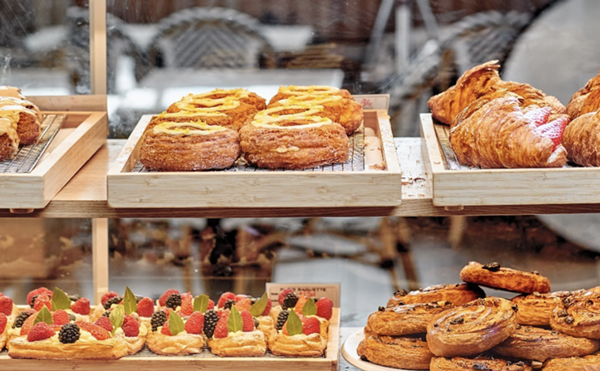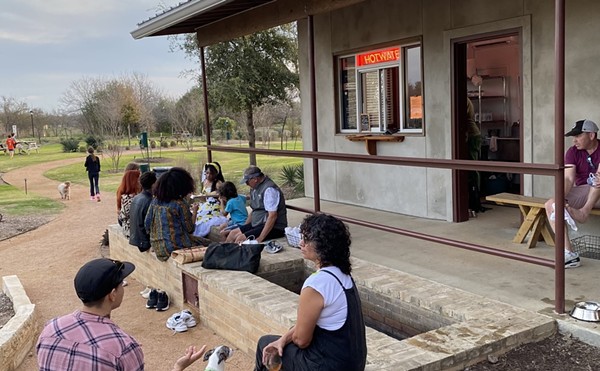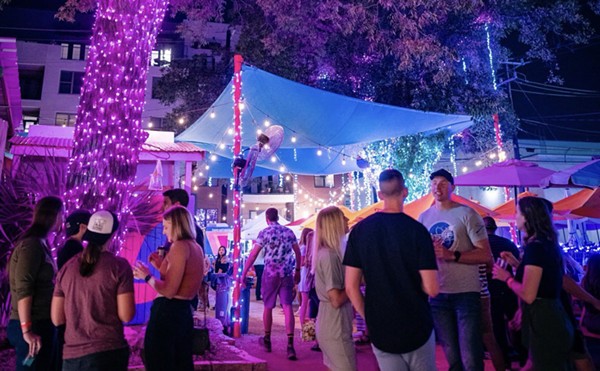It's a complicated and confusing wine world out there. A column such as this can only introduce the consumer to a few examples a month - and despite my efforts to discuss wines of relatively general release, it often takes luck to find them at local retailers. We have all stalled in front of ranks of shelves, searching in vain for a familiar label. Help is here - though you have to be willing to drink French.
Get over it; the French occasionally may be annoying, but their wine industry is in trouble these days. There's even loose talk about ripping up 20 percent or so of all vines in the country in order to stem the over-supply. Yet when all is said and done, the French still produce many, some would say most, of the world's best wines - in all price ranges. This is something Robert Kacher has known for more than 25 years.
Bobby is a hands-on importer, the kind of "relentless salesman," in Robert Parker's words, who not only knows personally all of the winemakers he represents, but has lived among them and had a major influence in forming many of their wines. (He claims to travel more than 20,000 miles per year shepherding his flock.) I've come to think of his name on the label as a sign that the wine is at least worth my attention - but don't take my word for it (though I'd secretly be happy if you did). Parker weighs in with this assessment: " ... the strip label indicating a bottle of wine is a Robert Kacher Selection has become as close to a guarantee of high quality as consumers are likely to find."
Just to put the contention to the test once again, I recently attended a whirlwind tasting choreographed by local wine whiz Joe Baker that presented nearly 50 Kacher imports. Here are some of the highlights - assuming I can read my handwriting.
The Costières de Nîmes region is located between Languedoc and the Southern Rhône and shares characteristics of both. I especially liked three, very different rosés from 2005: the Domaine de la Petit Cassagne (pretty strawberry and raspberry flavors), the Grande Cassagne (deeply colored, with rhubarb, pepper, and a bright finish), and the almost-meaty Mas de Guiot, with lots of layers and the promise of food friendliness. Grenache and syrah are dominant in these blends, but they naturally shine in full-bodied reds as well. Mas de Guiot's '05 grenache/syrah blend had profound berry-cassis flavors; the Petit Cassagne Rouge came back to bacon.
East of Avignon, in the cultural shadow of Cezanne's mountain, the Côtes de Ventoux also produces some well-priced reds from syrah and grenache, among them the '05 Mas Fondrèche Ventoux "O" Sud, flaunting big flavors of deep plum, black cherry, and even a little tar. It will cost you twice as much, but the Fondrèche '04 Nadal, all syrah, also packs twice the punch, sparked by pepper and tobacco.
One of Kacher's favorite winemakers is Yves Gras of Domaine Santa Duc in Gigondas just north of Ventoux. His '04 Côtes du Rhone Les Vielles Vignes, boasting spicy black fruit and a lingering finish, is easy to like but has guts. Spend just a little more for the '03 Santa Duc les Blovacs Rasteau Côtes du Rhône Village (names like this are precisely why we need help), and you get luscious layers of cassis and blackberry all pinned on a frame of bright acid and approachable tannins. Give the French a break, OK?
Get over it; the French occasionally may be annoying, but their wine industry is in trouble these days. There's even loose talk about ripping up 20 percent or so of all vines in the country in order to stem the over-supply. Yet when all is said and done, the French still produce many, some would say most, of the world's best wines - in all price ranges. This is something Robert Kacher has known for more than 25 years.
Bobby is a hands-on importer, the kind of "relentless salesman," in Robert Parker's words, who not only knows personally all of the winemakers he represents, but has lived among them and had a major influence in forming many of their wines. (He claims to travel more than 20,000 miles per year shepherding his flock.) I've come to think of his name on the label as a sign that the wine is at least worth my attention - but don't take my word for it (though I'd secretly be happy if you did). Parker weighs in with this assessment: " ... the strip label indicating a bottle of wine is a Robert Kacher Selection has become as close to a guarantee of high quality as consumers are likely to find."
Just to put the contention to the test once again, I recently attended a whirlwind tasting choreographed by local wine whiz Joe Baker that presented nearly 50 Kacher imports. Here are some of the highlights - assuming I can read my handwriting.
The Costières de Nîmes region is located between Languedoc and the Southern Rhône and shares characteristics of both. I especially liked three, very different rosés from 2005: the Domaine de la Petit Cassagne (pretty strawberry and raspberry flavors), the Grande Cassagne (deeply colored, with rhubarb, pepper, and a bright finish), and the almost-meaty Mas de Guiot, with lots of layers and the promise of food friendliness. Grenache and syrah are dominant in these blends, but they naturally shine in full-bodied reds as well. Mas de Guiot's '05 grenache/syrah blend had profound berry-cassis flavors; the Petit Cassagne Rouge came back to bacon.
East of Avignon, in the cultural shadow of Cezanne's mountain, the Côtes de Ventoux also produces some well-priced reds from syrah and grenache, among them the '05 Mas Fondrèche Ventoux "O" Sud, flaunting big flavors of deep plum, black cherry, and even a little tar. It will cost you twice as much, but the Fondrèche '04 Nadal, all syrah, also packs twice the punch, sparked by pepper and tobacco.
One of Kacher's favorite winemakers is Yves Gras of Domaine Santa Duc in Gigondas just north of Ventoux. His '04 Côtes du Rhone Les Vielles Vignes, boasting spicy black fruit and a lingering finish, is easy to like but has guts. Spend just a little more for the '03 Santa Duc les Blovacs Rasteau Côtes du Rhône Village (names like this are precisely why we need help), and you get luscious layers of cassis and blackberry all pinned on a frame of bright acid and approachable tannins. Give the French a break, OK?
Tags:

KEEP SA CURRENT!
Since 1986, the SA Current has served as the free, independent voice of San Antonio, and we want to keep it that way.
Becoming an SA Current Supporter for as little as $5 a month allows us to continue offering readers access to our coverage of local news, food, nightlife, events, and culture with no paywalls.
Scroll to read more Flavor articles
Newsletters
Join SA Current Newsletters
Subscribe now to get the latest news delivered right to your inbox.
















